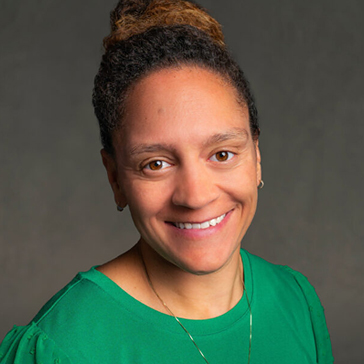There is an escalating debate about the role of social-emotional learning (SEL) in education. Proponents of SEL believe it’s correlated with positive outcomes for students, such as increases in student achievement and preparation for postsecondary education. Others think SEL crowds out academic instruction and isn’t a responsibility of public education.
Yet the shortcomings of our education system are not up for debate. Not enough students are graduating with the academic content, skills and mindsets to persist in college and schools struggle to build learning environments that help all students succeed. To be sure, social-emotional learning strategies can’t fix these problems alone. But if educators are intentional and purposeful in implementation, SEL can make a difference.
For example, there is evidence that “traditional” school discipline policies—many of which center on removing students from the classroom for even minor infractions—aren’t working for all kids. With clear racial disparities in student suspension rates and strong evidence of a “school-to-prison pipeline,” many districts are taking a closer look at how they respond to what is often labeled student “misbehavior.”
One option districts are exploring is integrating SEL in to disciplinary policies. As we’ve written, SEL can help students understand and manage their emotions, improve and maintain relationships and make responsible decisions—leading to improved behavior without the overuse of suspensions, “zero tolerance” approaches and other harsh disciplinary tactics.
But implementing a disciplinary policy that integrates SEL isn’t easy. Through Education First’s work with NoVo Foundation, I’ve worked with 14 school districts on SEL implementation, and have heard from hundreds of teachers, school leaders and district leaders across the country about their biggest SEL challenges. These include how to sustainably scale SEL work, thoughtfully engage and get buy-in from educators and integrate SEL with other district policies and practices (including discipline). Below are two illustrations of districts working intentionally to embed social-emotional learning into their disciplinary policies—and the challenges they’ve faced.
Cleveland Municipal School District (CMSD)
Cleveland has established itself as a national leader in SEL education. In response to high suspension rates and a 2007 student shooting, the Executive Committee of the District’s Humanware Executive Committee established Planning Centers—a concept driven by SEL—in schools across the district. A Planning Center is “a proactive setting designed to help students problem solve, develop appropriate school and classroom behaviors, and reduce the need for classroom removal.” Students in Planning Centers have the opportunity to acknowledge and learn from their mistakes—both preventing suspensions in the short-term and developing life skills to set up students for long-term success.
Since the Planning Centers were established, the district suspension rate has dropped significantly. But it is still high: the suspension rate in secondary schools is nearly 15%. Why is this? One reason is that not all teachers and principals are totally comfortable using the Planning Centers. Veteran educators in particular were so accustomed to historical disciplinary practices that they weren’t ready to shift to new responses. After a significant policy change, results always take time; if the people tasked with implementing the change don’t completely understand it or aren’t bought in, it can take even longer.
But Cleveland is committed to getting this right. “We have continued to witness yearly incremental growth in all areas of our Conditions for Learning Survey that is used to garner student perceptions,” says Cleveland Superintendent Eric S. Gordon. “The inclusion of student voice through our Student Advisory Committees has proven beneficial when examining school and district areas of concentration. We will continue to build social and emotional competence in our district by focusing on the needs of our students, families, staff and community.”
Metropolitan Nashville Public Schools (MNPS)
In 2012, MNPS became the first district in the state—and one of only a handful in the country—to hire a director of social and emotional learning to drive SEL strategies and support implementation. This kicked off an impressive effort to implement SEL across the city. According to the Collaborative for Academic, Social and Emotional Learning (CASEL), Nashville now has 8 evidence-based SEL programs in place.
This has had significant effects on suspensions in the district. For instance, Pearl Cohn High School reduced disciplinary referrals 33 percent after two years of SEL implementation. I.T. Creswell Middle School reduced suspensions by 60 percent after one year of SEL implementation.
And it’s not just about numbers. On a recent visit to Goodlettsville Elementary, I saw school administrators actively greeting students, checking in with them, looking them in the eye, and immediately pulling aside students that were visibly upset or coming off an altercation as they entered school. The administrators weren’t looking to hand out discipline; they wanted to understand and help alleviate the situation and do whatever was necessary to get students ready to learn. I wasn’t surprised to learn that the suspension rate is 2.8%.
But that success hasn’t been universal. While the overall suspension rate for Davidson County Schools is 12.4%, 36 schools have suspension rates of 20% or higher.
How did that happen? Once again, it comes down to implementation in schools and classrooms. While teachers and administrators at Pearl Cohn, I.T. Creswell and Goodlettsville have integrated SEL in to disciplinary practices, that’s not the case everywhere. If teachers and administrators in every school building don’t have the support they need for successful implementation, districts won’t get the results they want.
So what does this mean going forward? If districts are interested in implementing SEL-informed disciplinary policies, I would recommend they take the following steps:
There’s no question that SEL is a promising tool for implementing equitable and more effective school disciplinary practices. And while it’s not easy, when disciplinary policies are about understanding student behaviors—and adult responses—and no longer reflect racial differences, then we will be using SEL to help create, and keep kids in, the learning environments our students deserve.

